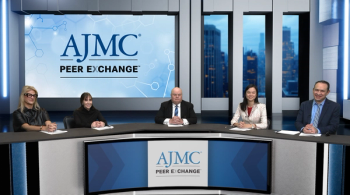
From ATS 2025: Analysis of Data Supporting PDE4 Inhibition in PPF
Panelists discuss recent trial data demonstrating that a novel agent not only slows lung function decline but also delays oxygen dependency and improves survival in both idiopathic pulmonary fibrosis (IPF) and a broad progressive pulmonary fibrosis (PPF) population, with consistent safety and tolerability supporting its expanding role in fibrotic lung disease management.
Episodes in this series

The recent clinical trial data not only highlight significant progress in IPF treatment but also extend promising findings to the broader PPF population. The trials expand the range of clinically meaningful end points, with “time to oxygen” emerging as an important measure of patient outcomes. This end point, along with the survival benefit seen in the IPF study, underscores the potential real-world impact of these therapies. While retrospective data had suggested such benefits before, the confirmation within a randomized, placebo-controlled trial marks a major milestone and offers new hope for patients.
Parallel to the IPF study, the PPF trial has demonstrated similar positive outcomes, though with some expected differences in the degree of efficacy. Both trials showed preservation of lung function with the investigational drug added to existing standard-of-care therapies. Notably, the PPF study enrolled a broad and diverse patient population, reflecting the complex nature of fibrotic lung diseases beyond IPF. Despite the differences, the results indicate clinically relevant benefits and reinforce the drug’s potential role in slowing disease progression across fibrotic lung conditions.
Safety and tolerability remain key considerations in these chronic illnesses, and the data to date are encouraging. The drug was well tolerated in both trials, with no unexpected adverse effects or additional laboratory monitoring required. Consistent safety profiles across studies strengthen confidence in the agent as a valuable treatment option. Altogether, these findings represent a meaningful advance in the management of fibrotic lung diseases, potentially setting new standards of care and improving long-term patient outcomes.
Newsletter
Stay ahead of policy, cost, and value—subscribe to AJMC for expert insights at the intersection of clinical care and health economics.







































